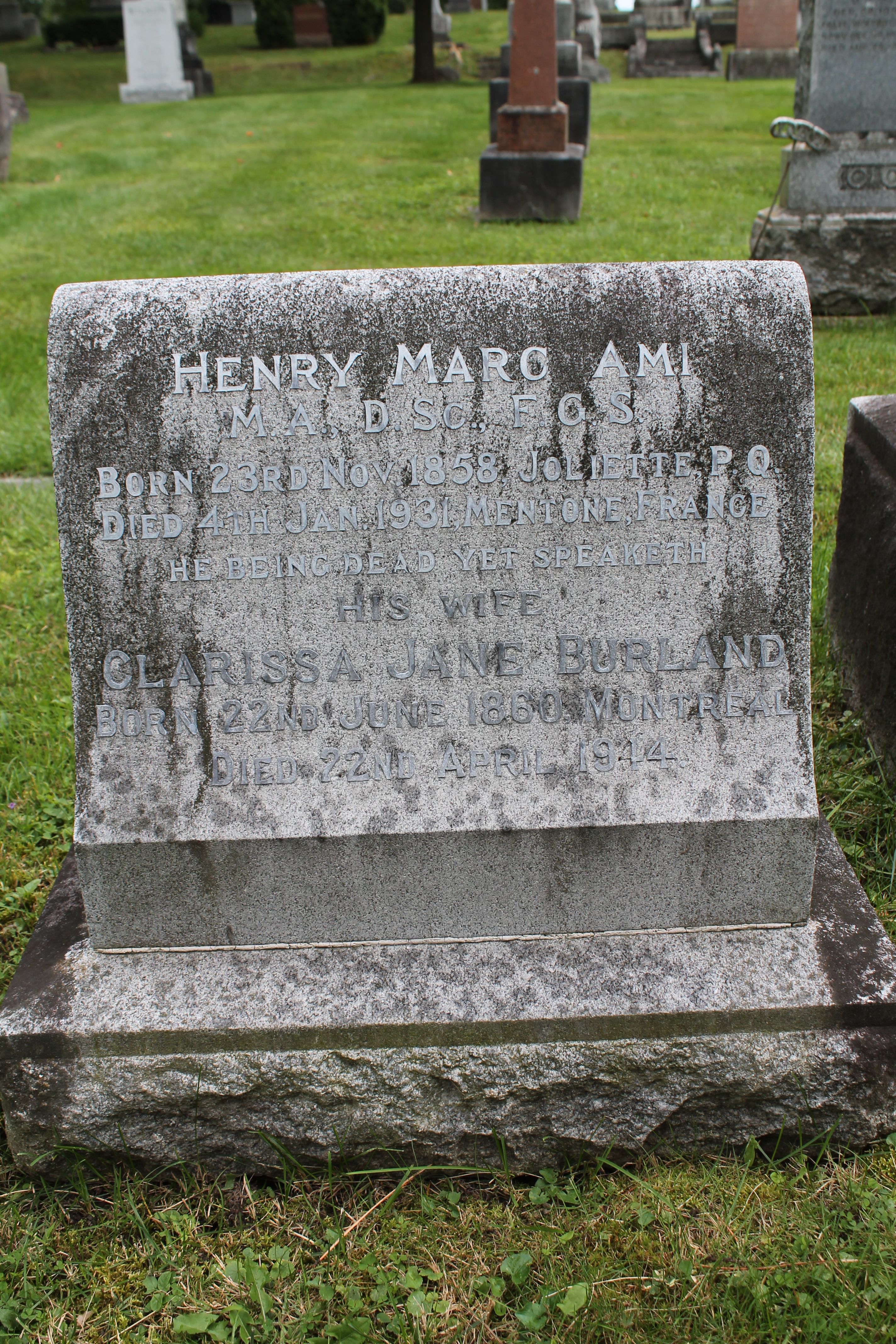
A heart in France - Dr. Henri Marc Ami
DR. HENRI MARC AMI - Section 41, Lot 125 (Sci)
Born in Belle-Rivière, Quebec on November 23, 1858, Henri Marc Ami studied geology at McGill University under John William Dawson, the first Canadian scientist of world-wide repute. Ami became a prominent geologist and palaeontologist.
From 1882 to 1911, he worked for the Geological Survey of Canada and is best known for his work on geological formations in Quebec and the Maritimes.
From 1895 to 1900, Ami was the editor of the Ottawa Naturalist and published many papers on the geology and palaeontology of Canada.
The Canadian Field-Naturalist is a quarterly scientific journal published by the Ottawa Field-Naturalists' Club. The journal publishes original scientific papers related to natural history in North America. It accepts submissions by both amateur and professional naturalists and field biologists. The journal also publishes reviews of recently-published books relevant to the natural history of Canada.
The Canadian Field-Naturalist has been published continuously since 1880, under several names during its early years. For 7 years beginning in 1880, the Ottawa Field-Naturalists' Club issued the Transactions of the Ottawa Field-Naturalists' Club annually. With volume 2 in 1887, the Transactions became a subtitle of volume 1 of The Ottawa Naturalist, a monthly publication. With volume 3 of The Ottawa Naturalist in 1889 the emphasis changed from local members' reports to national ones, and in 1919 the journal was renamed The Canadian Field-Naturalist (starting with volume 33 which was volume 35 of the Transactions but this subtitle was subsequently dropped)
In 1900, he was elected to the Royal Society of Canada and in 1905 the Geological Society of London honoured him with the Bigsby Medal.
The Bigsby Medal is a medal of the Geological Society of London established by John Jeremiah Bigsby. It is awarded for the study of American geology.
In France, he founded the Canadian School of Prehistory. During his time at the Geological Survey of Canada, Ami developed an interest in archaeology. He was responsible for gathering an early collection of human remains from Aylmer Island and adding it to the Survey’s collections.
After his retirement, Ami devoted himself entirely to archaeology. He conducted a number of excavations in southern France, focusing on the Dordogne region.
Combe-Capelle is a Paleolithic and Epipaleolithic site situated in the Couze valley in the Périgord region of Southern France. Henri-Marc Ami carried out excavations in the area from the late 1920s until his death in 1931. The famous Homo sapiens fossil from Combe-Capelle, discovered in 1909 was sold to the Museum für Völkerkunde, Berlin, in 1910. It was for a long time considered to be 30,000 years old, an Upper Paleolithic Cro-Magnon man and one of the oldest finds of modern humans in Europe, formerly classified as Homo aurignaciensis hauseri. This was revised in a 2011 study, which dated collagen from a tooth of the skull in Berlin with accelerator mass spectrometry. The fossil was found to date to the early Holocene (Mesolithic Europe), at 9,500 years old.
Much of his extensive collection is permanently housed at the Canadian Museum of History, but additional artefacts can also be found in the collections of the Redpath Museum at McGill University in Montréal, the University of Toronto and the Perth Museum in Perth, Ontario.
Henri Marc Ami passed away in Menton, France, on January 4, 1931. After he passed away, his heart was taken and buried at Combe-Capelle and he was then buried at Beechwood.




